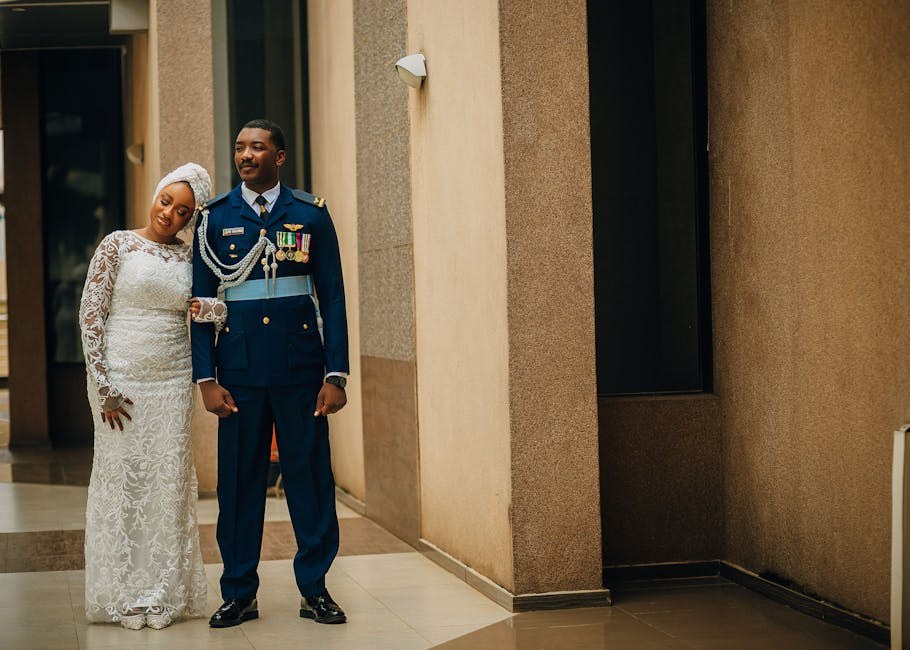Call it romance, routine, or something in between – many people look at marriage and see a simple contract, a tidy line on a form. Yet when you step past the stereotypes and movie endings, marriage reveals a richer story. It is not a magic spell that removes conflict or worry; it is a daily practice that often strengthens well-being, steadies emotions, and anchors two people through ordinary days and difficult seasons. If you have ever had an argument that made you think, “Life would be easier alone,” you are not unusual. What matters more is the bigger pattern over time: for many couples, marriage creates a durable framework that supports health, stability, and a sense of meaning.
A clear-eyed view of commitment
“Happily ever after” is a charming phrase – and a misleading one. A healthy bond rarely looks like endless bliss. It looks like “happily most days,” a rhythm where setbacks are met with care, forgiveness, and renewed effort. That realism is not a compromise; it is the very ground where intimacy grows. More calm than chaos, more care than conflict – that is a workable definition of success. Within that frame, marriage often becomes a practical engine for security, cooperation, and mutual growth.
Think of it this way: two people share a home, schedules, responsibilities, and goals. They also share reminders, encouragement, and boundaries. Over time, those simple interactions accumulate – small signals that become steady support. The result is not perfection but resilience, and resilience tends to spill into other domains of life: sleep, nutrition, social ties, finances, and even the willingness to seek help when something feels off.

Core advantages you might overlook
Many benefits are easy to miss because they unfold quietly in daily routines. Others become visible only during emergencies, illnesses, or major life transitions. Below is a reorganized look at advantages frequently associated with a committed bond. None of them require grand gestures; most involve ordinary care, repeated consistently. Throughout, notice how marriage functions as a structure – one that encourages steadier choices and softens the impact of stress.
-
A longer runway for life
Across cultures and communities, people in stable partnerships often enjoy a longer runway – more years to spend together, more time to pursue dreams, more opportunities to repair mistakes. The mechanism is not a single cause; it is a bundle of small habits shaped by marriage: timely checkups, earlier attention to symptoms, gentler routines, and a partner who nudges you to rest when you would otherwise push too hard. The promise is not immortality; it is the cumulative effect of steady care.
-
Shared resources, steadier living
Pooling resources can raise the floor on daily life. One rent or mortgage instead of two, groceries purchased with a plan, chores divided instead of duplicated – these choices create breathing room. That margin makes it easier to weather career changes, medical bills, or surprise repairs. In this sense, marriage is not only emotional; it is logistical. It reduces friction, lowers certain costs, and frees attention for goals that matter more than scrambling to meet basic needs.

-
Everyday health monitoring
When you live closely with someone, you become tuned to their baseline – how they speak, move, and rest. Small deviations stand out. A partner might notice a persistent cough, a change in appetite, or new irritability that hints at poor sleep. Those gentle observations, delivered with care, often lead to quicker appointments and earlier interventions. Marriage becomes a quiet early-warning system, and that timeliness can make a difference for both acute issues and long-term prevention.
-
Fewer risky detours
Accountability softens extremes. People in committed bonds often moderate behavior because their choices affect someone else. Late nights become fewer, drinks are paced, breakfasts happen, and recovery after illness is taken seriously instead of hurried. The point is not moral superiority; it is simple mathematics of responsibility. In marriage, there is someone who will notice if you drift – and someone you do not want to worry.
-
Benefits for men are pronounced
While both partners gain from a healthy bond, men often see distinct advantages in day-to-day health routines and emotional steadiness. Part of this may come from how care is exchanged: reminders to schedule appointments, encouragement to talk through stress, and practical nudges toward balanced meals and adequate sleep. Whatever the mix of reasons, marriage frequently channels male energy toward stability – away from isolation and toward support.

-
Emotional support as a stress buffer
Stress wears on the body and mind. A supportive partner can blunt that wear by offering perspective, humor, or simply presence. Talking through a bad day lowers the load; solving a problem together builds confidence for the next challenge. Over time, this shared coping strengthens the system around you – a calmer home, clearer routines, and rituals that signal safety. Marriage does not eliminate stress; it gives it somewhere soft to land.
-
Mental health protection
Stable bonds often reduce the likelihood of certain mental health struggles taking root or intensifying. Security matters: knowing someone is in your corner changes how you interpret setbacks. Conflicts still happen – sometimes fiercely – but there is a plan for repair. By contrast, the upheaval of separation can amplify stress in the short term, and that turbulence may weigh heavily on mood and outlook. The overall pattern suggests that a solid partnership, including marriage, can promote steadier mental footing.
-
Happiness and sexual well-being
People in functioning partnerships frequently report higher satisfaction with life, and intimacy plays a part. A dependable, respectful sexual bond tends to support overall well-being: better mood, more connection, and a sense of being chosen. Consistency helps – knowing your partner’s preferences, communicating boundaries, and turning intimacy into a dialogue rather than a performance. In marriage, sexual fulfillment is not just about frequency; it is about the safety that allows exploration and honest feedback.
-
Why vows still matter
Living together brings convenience, but formal commitment changes the psychology of the bond. Vows are a public promise, and that promise can deepen a sense of safety. The message is simple: we are in this for the long haul. That security reshapes decisions – how you invest, where you live, what risks you take, and which arguments you ignore because the relationship matters more than scoring points. In this way, marriage becomes a stabilizing signal that the future is shared.
-
Built-in emergency contact
When forms ask for “emergency contact,” you do not need to think. Someone knows your allergies, your medications, your preferences for care. Someone can answer the phone at 2 a.m., meet a doctor, or pick you up without hesitation. It is a practical benefit that carries emotional weight. Marriage turns help from a favor into an understood responsibility – a promise that when the unexpected arrives, neither of you will face it alone.
-
A stronger environment for children
Children tend to do well when the adults in their home offer consistent routines and mutual respect. Two caregivers can share the heavy lifting: school runs, bedtime stories, budget planning, discipline, and celebrations. That consistency lowers anxiety, narrows the space for risky experimentation, and cultivates resilience that carries into adulthood. Marriage often structures that stability – schedules hold, expectations are clearer, and affection is easier to witness and learn.
From idealism to daily practice
Romance stories chase big moments; real life is made of small ones. The coffee set out the night before. The text that says, “Home late – save me a plate?” The apology after sharp words, followed by a plan to do better. Marriage thrives on these modest acts, the daily choreography that signals care. The aim is not to avoid conflict but to handle it with skill – to argue fairly, to listen without rehearsing comebacks, to step away when tempers are high and return when they cool. Patience becomes a habit, not because you are timid, but because you value repair.
Forgiveness lives here, too. Nothing erodes closeness faster than scorekeeping. Long-term bonds require a particular generosity – a willingness to grant the benefit of the doubt and to accept your own part in a misunderstanding. That generosity does not excuse harmful behavior; rather, it protects the relationship from needless wear. In a good season, it looks like lightness. In a hard season, it looks like endurance. Either way, marriage becomes a practice of returning to one another after setbacks.
How the structure supports the people
Structures shape behavior. Calendars, budgets, and bedtime routines are unglamorous – and powerful. The same is true of rituals like nightly check-ins, shared meals, and brief walks after dinner. These patterns reduce decision fatigue, which frees energy for work, creativity, and play. When partners know what to expect, they can show up more fully. Marriage often provides the scaffolding for those patterns, a reliable outline that the couple colors in with their preferences and values.
This structure also clarifies boundaries. You learn how to disagree without contempt, how to respect privacy without drifting apart, how to balance togetherness with individual pursuits. Such boundaries keep intimacy from collapsing into enmeshment. Over time, you each become more yourselves – not less – because the container is strong enough to hold differences without panic. In that sense, marriage is not the end of freedom; it is the framework that allows freedom to be exercised with care.
Resilience through seasons
Every relationship cycles through stages: honeymoon lightness, familiar routines, periods of distance, and renewed closeness. During demanding stretches – a sick parent, a job loss, a new baby – couples who prepare for stress fare better. Preparation can be simple: a conversation about roles, a list of tasks to outsource, or a pact to prioritize sleep over late-night screens. Marriage supplies the incentive to plan proactively because both people share the outcomes. When life becomes stormy, the plan becomes a lifeline.
Repair is the other lifeline. Even with a plan, you will face frayed nerves and missed signals. A reliable repair strategy might include a pause phrase (“Let’s take ten minutes”), a ritual apology (“I’m sorry for my tone – here’s what I heard, and here’s what I meant”), and a reset practice (a short walk, a hug, or shared silence). These strategies seem small, but they prevent minor conflicts from hardening into lasting resentment. With repetition, they become reflexes – the muscle memory of marriage.
Rethinking “greener grass”
It is easy to glamorize independence when you are frustrated, just as it is easy to glamorize marriage when you are lonely. Both views blur the full picture. Autonomy offers flexibility and speed; partnership offers stability and shared courage. The question is not which life is superior in the abstract. The question is which life aligns with your values, temperament, and goals. For many, the long arc of marriage aligns with a desire for belonging, mutual accountability, and the deep comfort of being known.
Envy is a poor advisor – it highlights novelty and hides cost. Your single friend’s dazzling calendar does not show the quiet ache after a bad day with no one to debrief. Your married friend’s cozy photos do not show the tough conversations that made that closeness possible. The healthiest decision is the honest one. If you choose marriage, choose it with your eyes open – expecting joy, work, and the steadying benefits that arrive when two people keep showing up.
What commitment really offers
Commitment is not a guarantee of easy days; it is a promise to keep building together when days are ordinary, thrilling, or hard. The tools are simple and profound: speak kindly, argue fairly, make repair a priority, and protect shared time. When the world presses in, having someone who knows your fears and your hopes – and who stands with you anyway – is an unmatched form of comfort. Marriage will never be flawless, because people are not flawless. But in its best form, it turns imperfection into intimacy, and effort into peace. That is the quiet power of a life lived side by side.